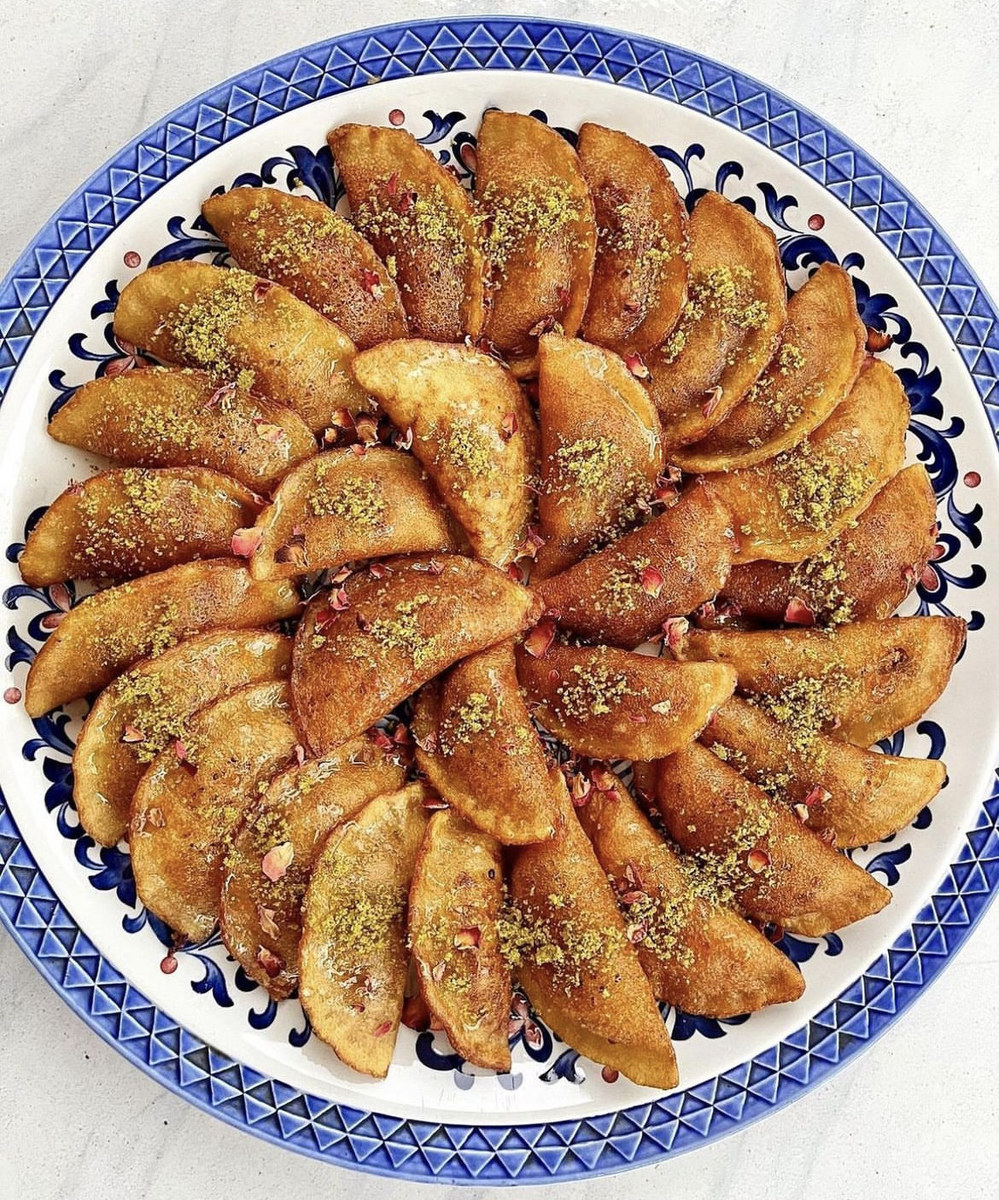RIYADH: During Ramadan, Muslim families around the world bring a touch of sweetness to the iftar spread with traditional desserts that never go out of style.
Logaimat
Logaimat — meaning a bite or mouthful — is a staple dessert during the holy month. It is made of dough that is deep fried, then soaked in honey, syrup or molasses, and topped off with sesame or nuts depending on the cuisine.
This dumpling dish is thought to have been developed in Baghdad, where it was known as “judge’s bite” because legal adjudicators received the treat as their first payment.
Other theories suggest the sweet treat came from Greece, arriving in Egypt via Greek bakeries in Alexandria before spreading to neighboring countries and the Gulf region.
This crispy dessert is found in many Middle Eastern and European countries. It is a sweet dish that is known as lokma in Turkish and loukoumades in Greek.
In recent years, the dessert has gained popularity, with contemporary flavors such as Nutella and Lotus Biscoff.
Qatayef
Popular in Saudi Arabia, Egypt, and Levantine countries, qatayef are pancakes filled with white cheese or nuts. The dish is fried or baked, and served with syrup or honey.

Popular in Saudi Arabia, Egypt, and Levantine countries, Qatayef are stuffed fried pancakes. (Supplied)
These crunchy, rich desserts are best served warm with cream, walnuts, or pistachios.
Kunafa
A traditional Arab dessert made of spun pastry, soaked in sugar syrup (attar) and layered with cream or cheese.
Kunafa originated in the Levant, and is said to have been introduced to what is now known as Egypt during the Fatimid era in the 10th to 12th centuries.
The sweet dessert is served either hard or soft. Hard kunafa is crunchy and made out of shredded phyllo dough. Soft kunafa is made of ground semolina dough.
This well-known dessert has notes of rose water and orange blossom. It is best served warm with crushed pistachios as garnish.
Honeycomb bread with cheese
Khailat nahal, which translates to honeycomb in Arabic, is a Yemeni dessert made of bread stuffed with cheese and soaked in syrup. This sweet and salty delicacy is perfectly paired with a warm cup of black tea.
Maqshush
Maqshush is a Saudi traditional dessert made of buckwheat pan bites topped with ghee, honey, date molasses or sugar. Locals often indulge in the delicious dessert when it is cold and rainy.
In 2023, maqshush was named Saudi Arabia’s national dessert.
Dates
Dates are a symbol of Saudi Arabia. The fruit represents an integral part of the Kingdom’s hospitality, as are offered with Arabic coffee at home, as well as in the office and at events of all kinds.
During the holy month, dates are a staple on the iftar table. Many Muslims break their fast by eating three dates and a glass of water, just as the Prophet Muhammad did.

Dates are also used in many desserts during the holy month to make date cookies (mammoul). (Supplied)
With more than 200 varieties to choose from, dates come in a range of flavors, textures, colors and levels of sweetness.
Dates are also used in many desserts during the holy month to make mamoul cookies and sticky date pudding. They are also stuffed with dry fruits, pistachios, walnuts and almonds, and coated with chocolate for a sweet treat.
































